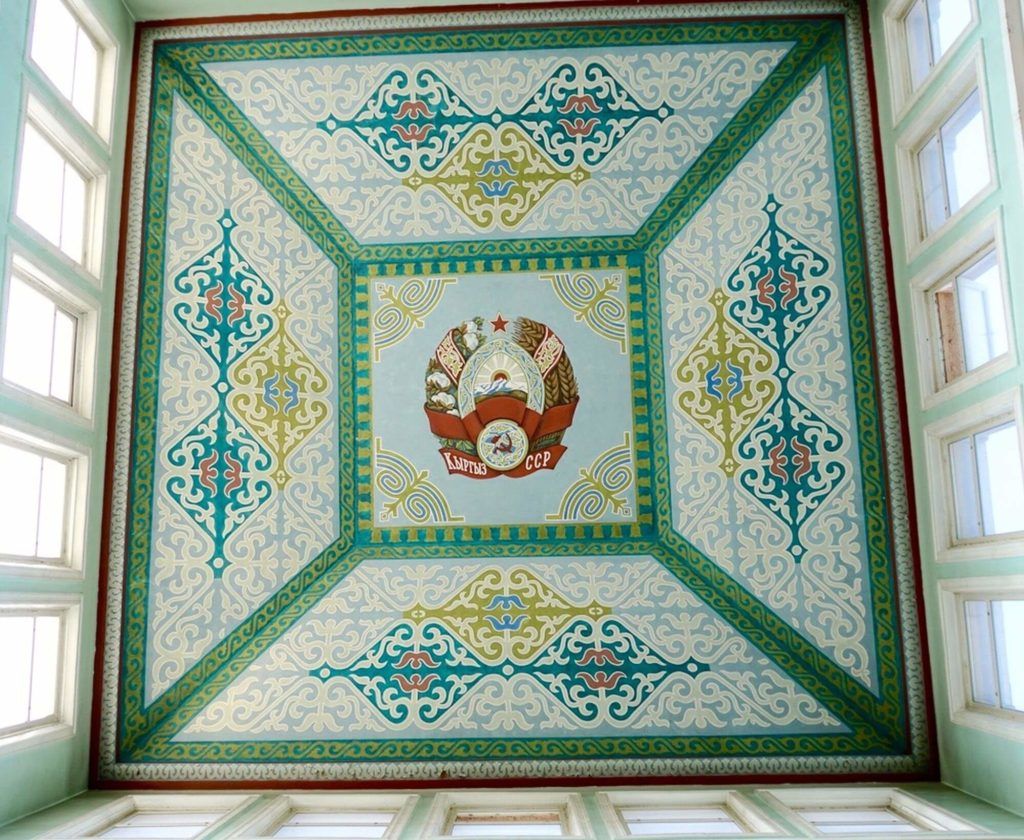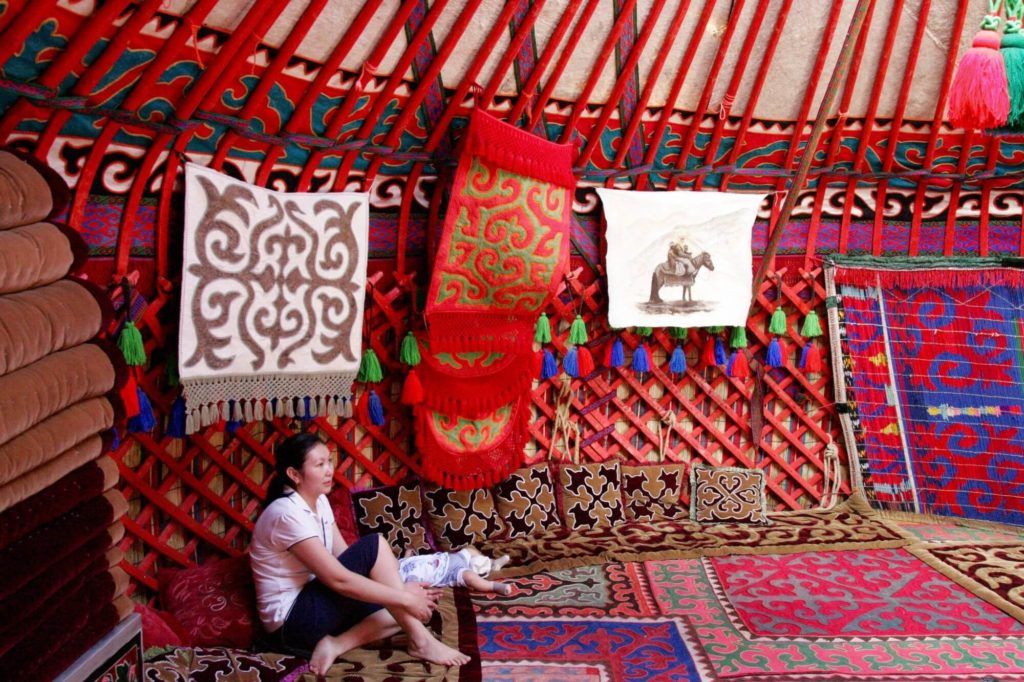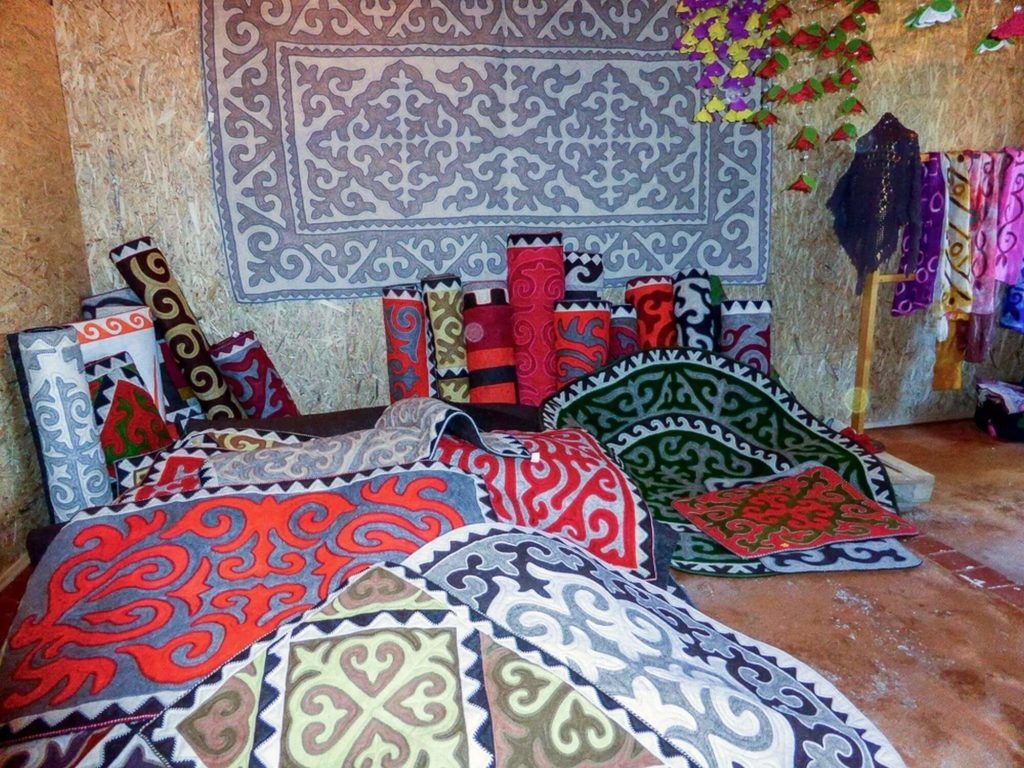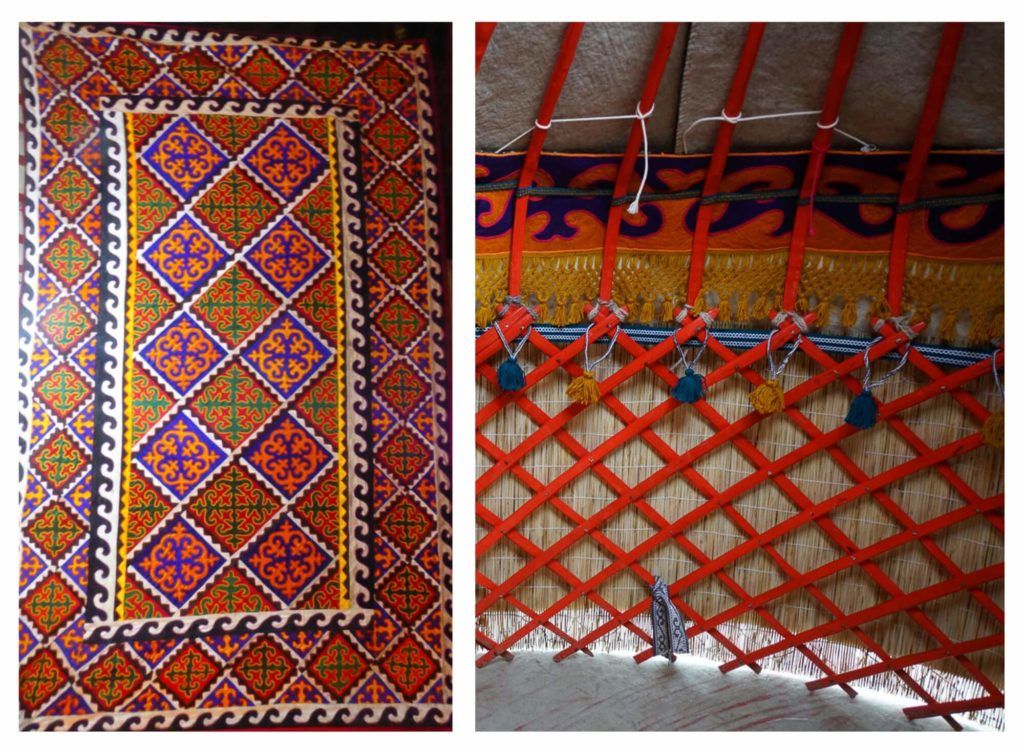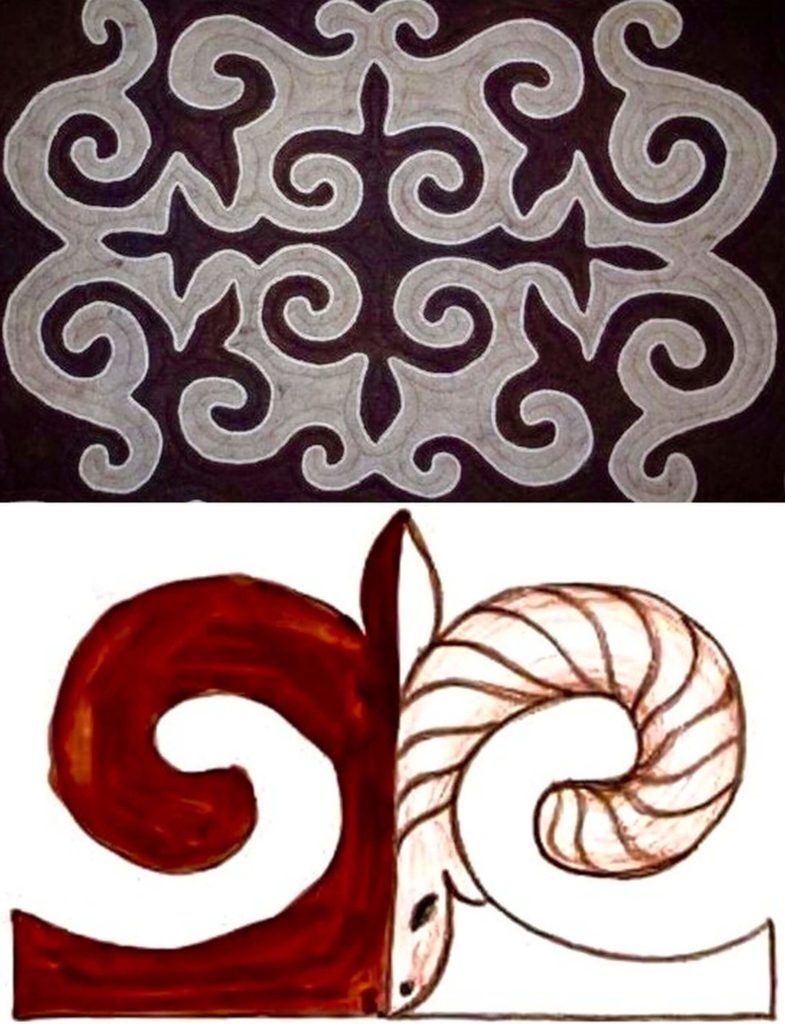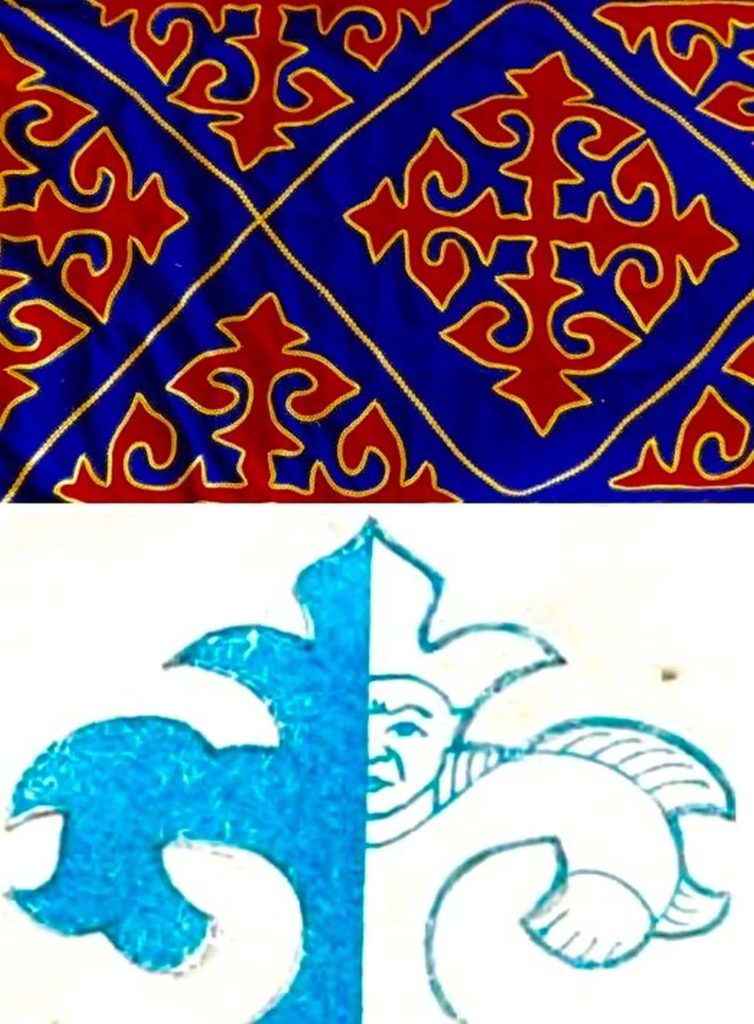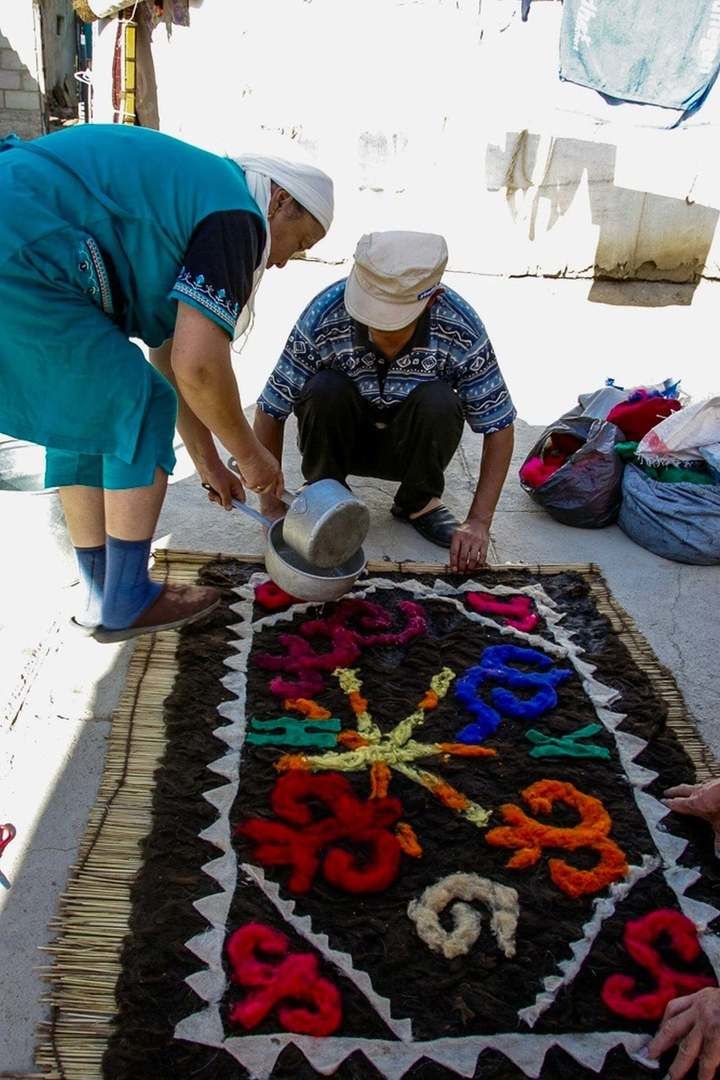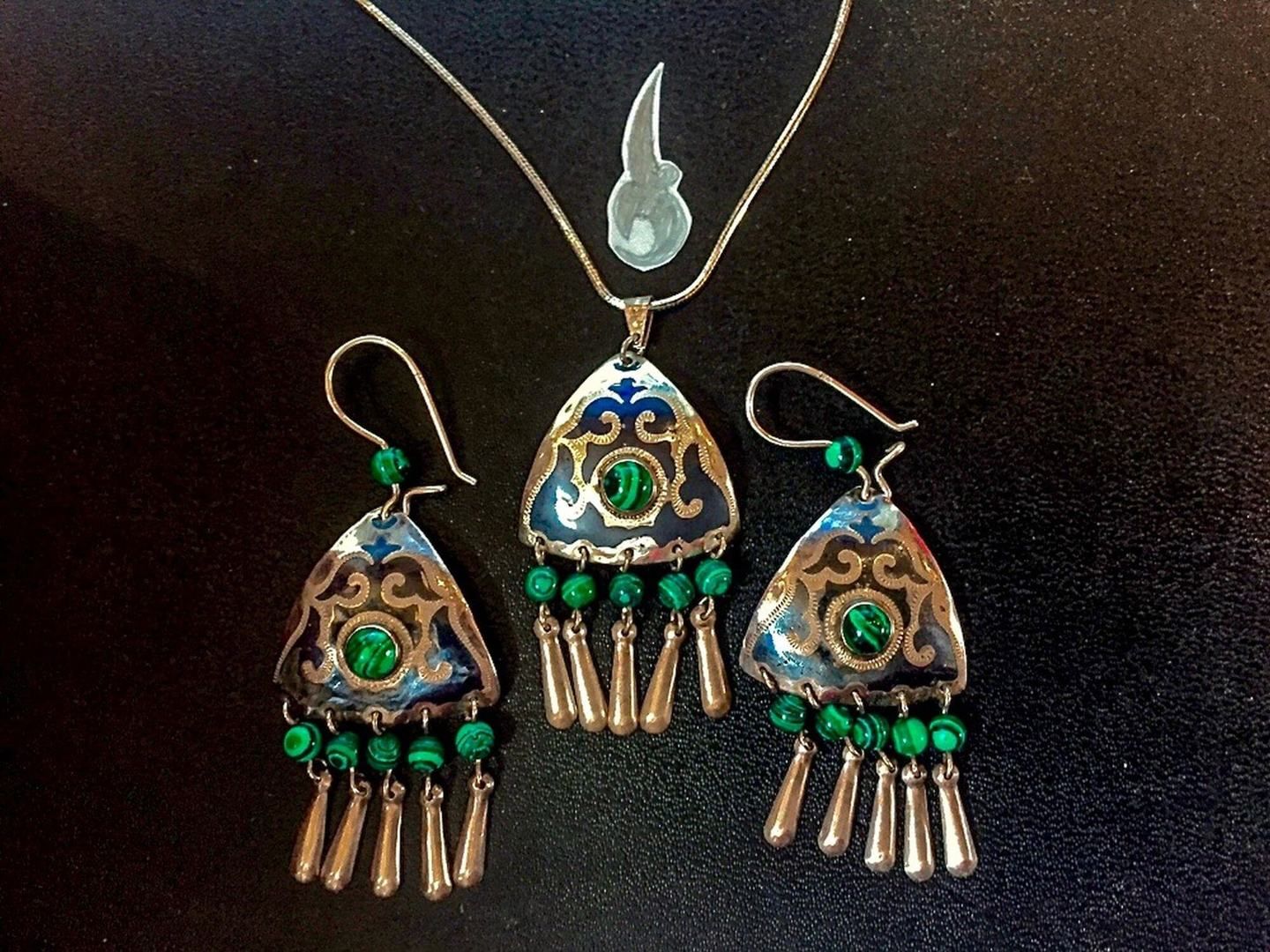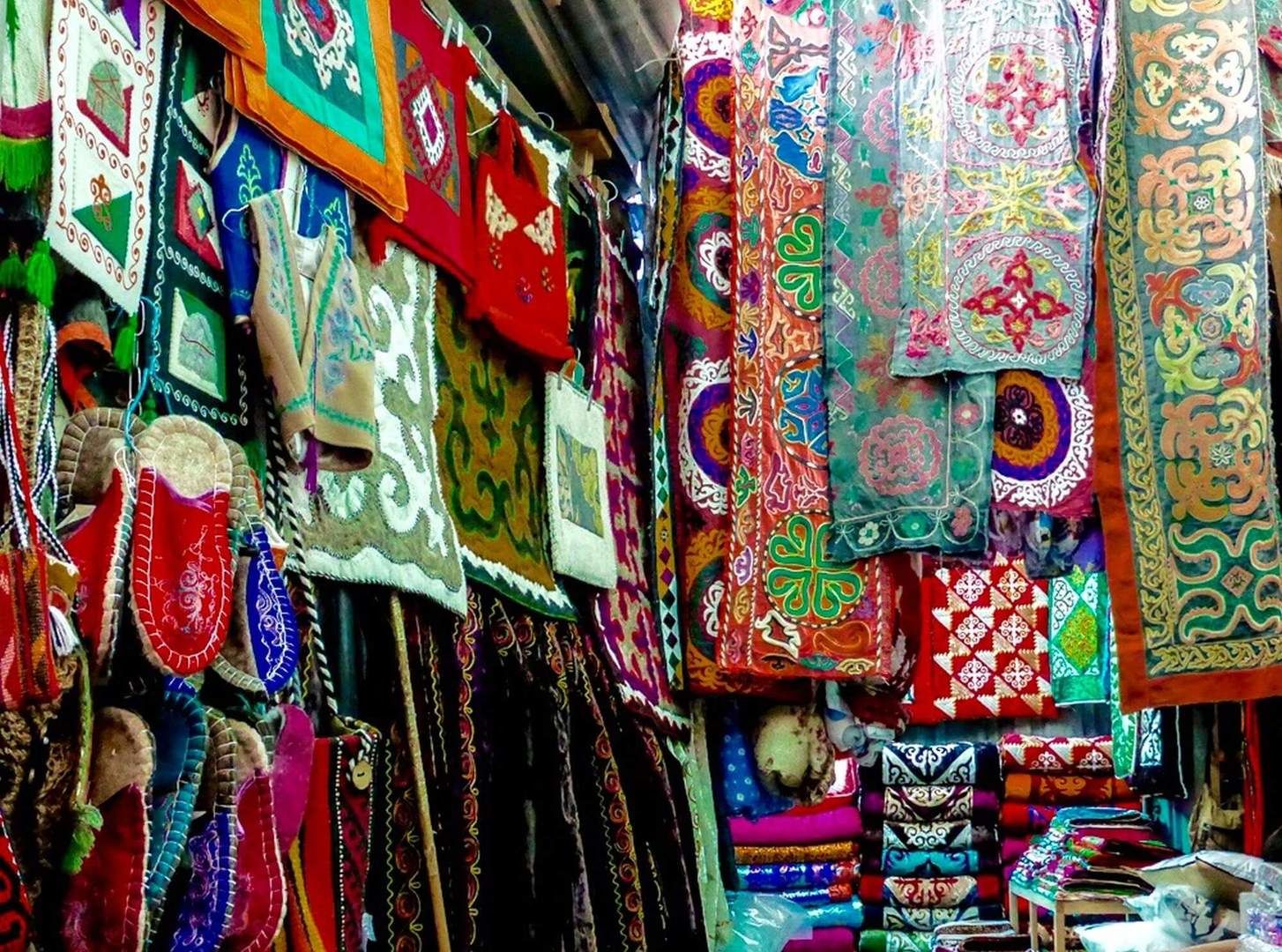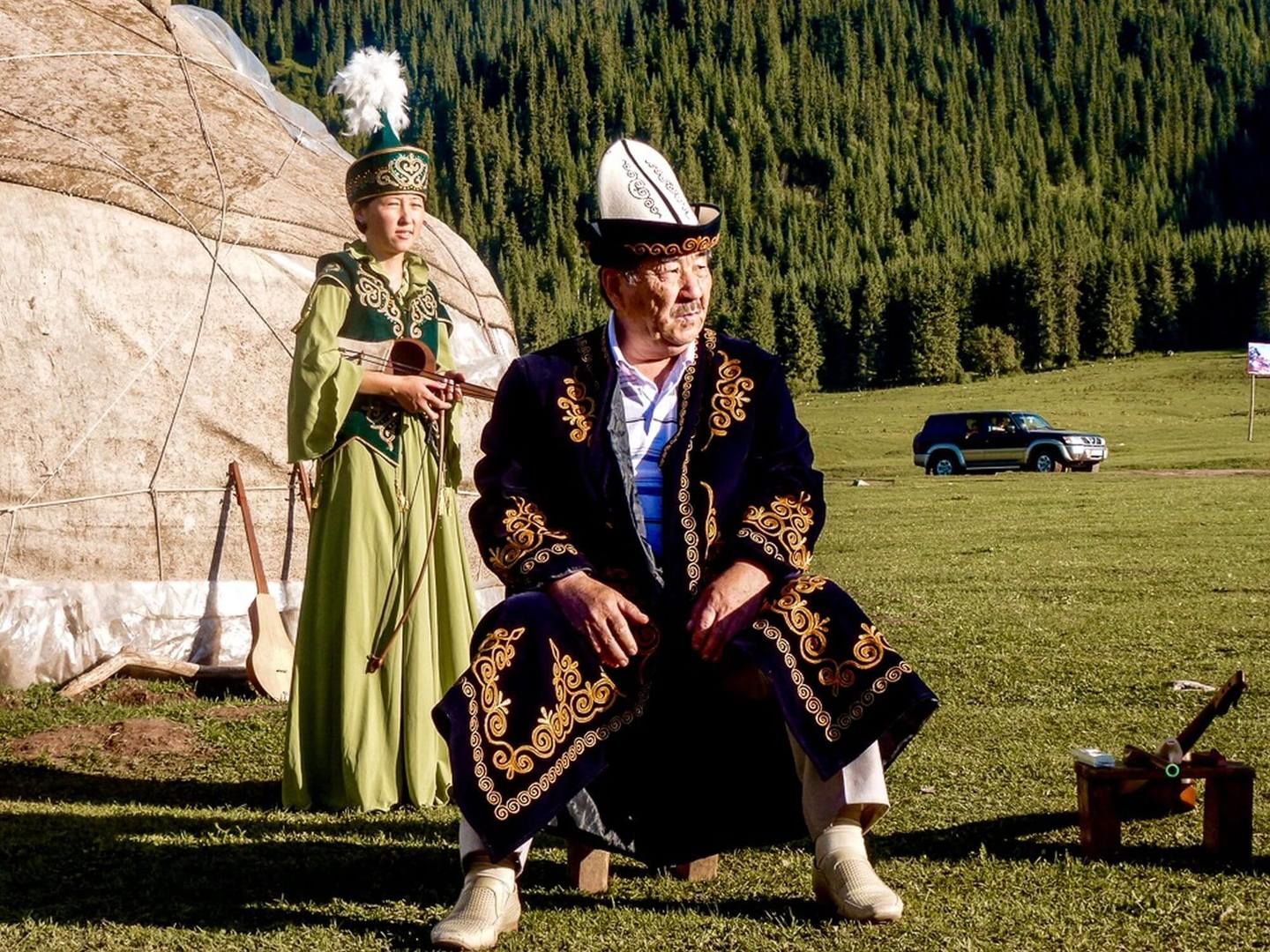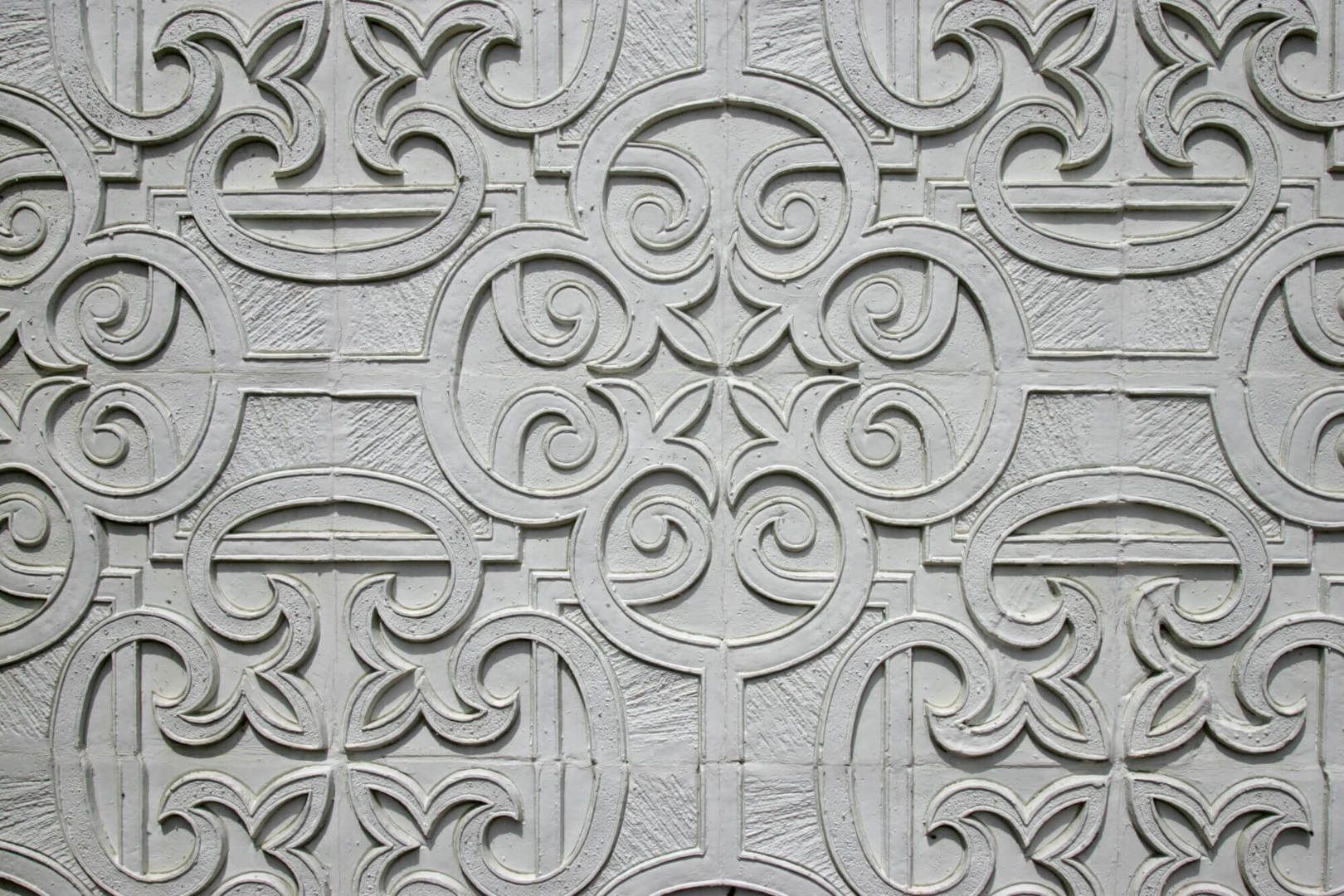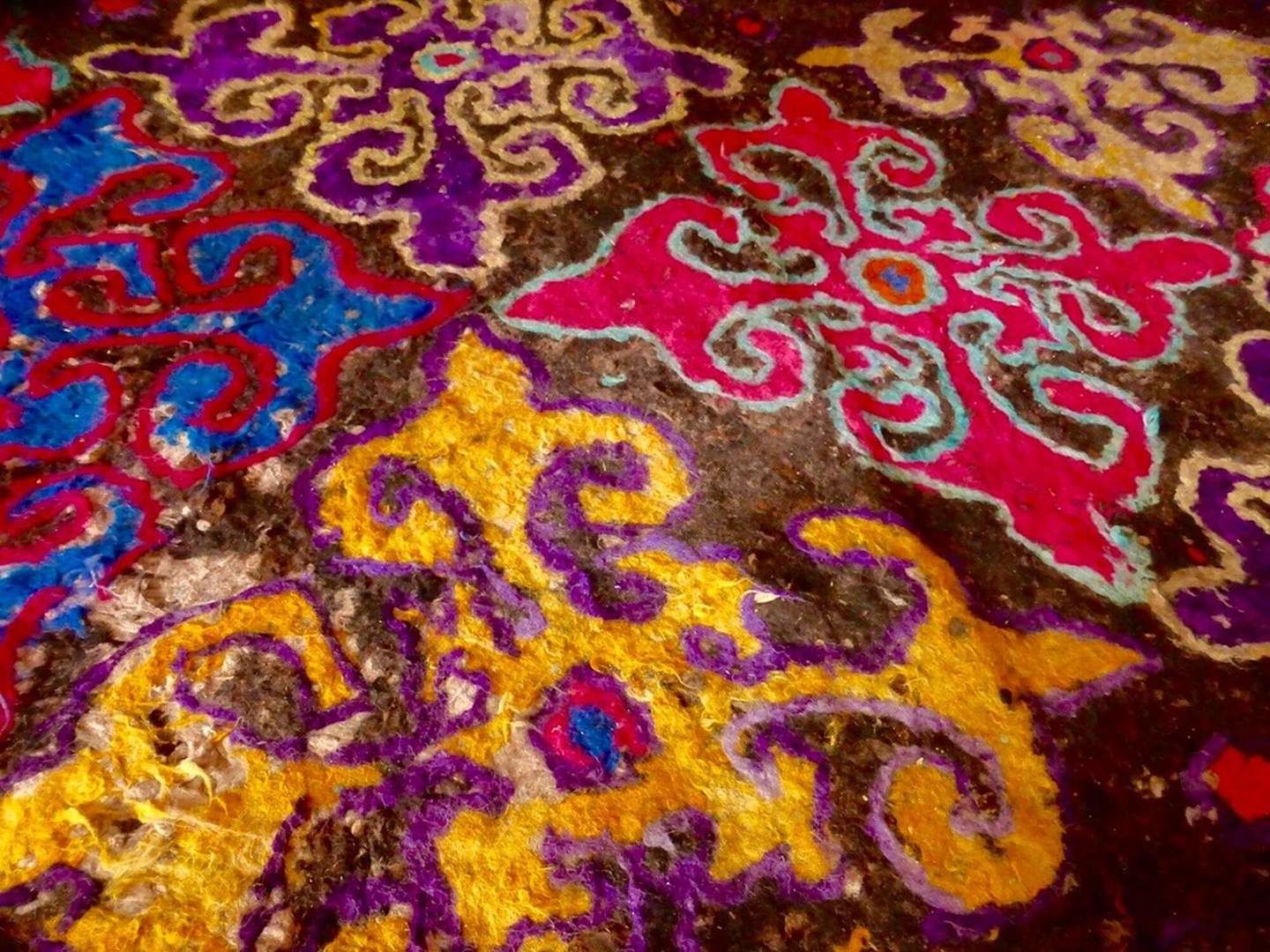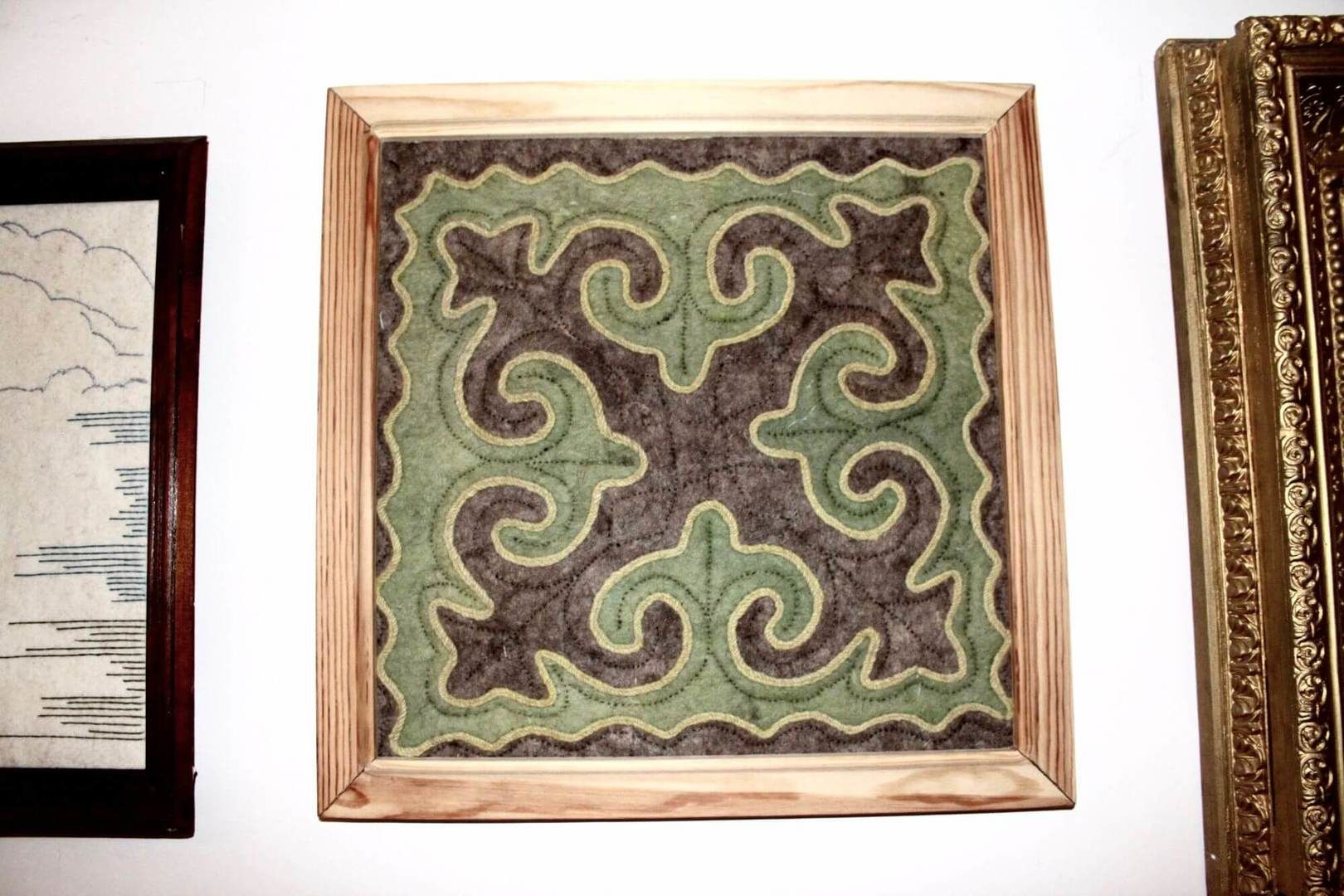Central Asia Ornaments
Traveling through Kyrgyzstan and Kazakhstan, you will easily notice a variety of different ornaments. depicted on all sorts of souvenirs, company logos, house facades, carpets, curtains, traditional clothes, etc. Ornaments are national symbols. Drawing such ornament on a Soviet building, for example, differentiates your building from Soviet buildings in other post-soviet countries, adding a distinct national flavor to your building.
Ornaments that you can see nowadays are very abstract and have an unlimited number of patterns. About 200 basic elements are combined to make thousands of different patterns. The basis for ornaments are abstractions from nature and some early spiritual symbols. For nomads of Central Asia, ornaments have a special spiritual meaning and represent the deep connection of its people with the stunning nature surrounding them. So let us explore a couple of basic elements – what does it all mean and where did it come from?
The choice of the color depended on the surrounding nature. For example, in high pastures with green grass, red poppies and blue sky, one can find corresponding color domination of green, red and blue. In drier areas, masters of handicraft used colder colors that were less bright, representing earth and the harsh contrast of nature.
Supposedly, the first ornaments appeared in the Bronze age and had romb-shaped geometrical patterns. These ornaments look like the wooden wall frame of the yurt, which still looks the same even today. These patterns were associated with the sense of home, family, and safety. It is easy to understand why – imagine that hunter leaves his yurt for several days into the wilderness and the only thing he has with him is the bag of arrows with this pattern. This pattern made by his mother or wife gave him the strength to hunt, survive and come back home.
The most popular ornament of nomads is the horn of wild animals such as deer, sheep, and goat. Wild goats and sheep were the highest objects of sacrifice for people inhabiting Central Asia and for hunting nomads, horns represented prosperity. There is a legend about the mother- deer who adopted the last surviving orphan Kyrgyz kids brought to present-day Kyrgyzstan and nurtured them. Their descendants were called ancestors of Bugu (deer) and praised deer horns. A very interesting novel is written by Chingiz Aitmatov regarding this legend to the contemporary society. Little detail variations of the ornament design can have different meanings from the image of an animal to an image of a person, as seen in the illustration below
Big horns also practically meant a big haul for the family, enough food and clothing. Horns themselves were brought to shrines or kept as a holy symbol, leather was used for house utensils or for clothing, and wool was used for making felt. Thus everything was used from the animal, and this importance was also represented in the patterns.
One of the early spiritual beliefs was in Umai-Ene, winged woman with a child, a spirit that represents fertility and protects mothers and babies. This ornament comes from the times when people believed in Tengriism and spirits of nature. This ornament also symbolizes the wish of happiness and many children. Nowadays, this symbol is used primarily in jewelry as it is still believed to protect children and woman from evil eyes and diseases.
With time single ornaments represented the historical development of nomadism. Early animalism seen also in petroglyphs, continued into Scythian zoomorphic designs (9th– 1st century BC), images of flowers and birds from Sogdian culture (6th – 7th AD), circular ornaments from the Sassanid empire (4th -8th century AD) and then abstraction of animalism with the rise of Islam in the region, as Islamic teachings forbid any illustration of people and animals. Thus the direct depictions of animals and human figures evolved into more and more abstract patterns over time. Under the influence of their settled neighbors, nomads adopted circling rosettes. Being at the crossroad of the trade routes and battlefields, more and more ornaments evolved, showing the influence and diffusion of color and ornamental design from different cultures.
Nowadays, ornaments are very popular among local people and tourists. These patterns are used not only for decorating yurts and utensils but also for festive attires, jewelry, and souvenirs. Local people love the abstract national designs and for foreigners, it is a unique present to take home.
Ornaments that survived millennia can be seen across Central Asian countries. Depending on the country you visit, you will be able to see different variations of ornaments and different interpretations. Good research was done during the Soviet Union and after the independence, if you are interested in ornaments and cultural heritage of patterns in Central Asia we recommend you following books:
Ibraimova, J. The Eastern Pamit Catalogue. Osh: Kagaz Resurstary.
Kadyrov, V. (2003) Kyrgyzstan. The Art of Nomads. Bishkek: Raritet.
Kadyrov, V. (2003) Kyrgyzstan. Ethnic Jewellery of Central Asia. Bishkek: Raritet.
Masov, R. M.(2009) The folk art of the Pamirs. Dushanbe: Institute of History, Archeology and Ethnography Academy of Sciences of the Republic of Tajikistan.
Tolonbaev. S (1989). Oyu (ОЮ). Almaty: Onor



